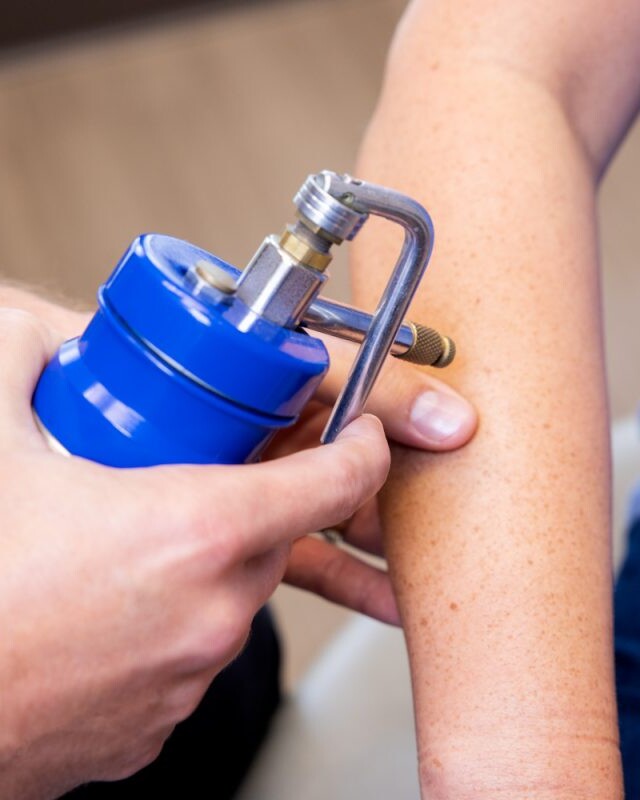Actinic Keratoses

Actinic Keratoses (AKs) are precancerous lesions that most commonly occur in sun exposed areas (head, neck, arms, chest and legs) as a result of chronic, cumulative sun exposure. Approximately one in ten AKs will turn into skin cancer (squamous cell carcinoma) within ten years. Actinic keratoses are flesh colored or pink, thick, scaly, or crusty patches of skin. Early treatment is recommended because of the potential of these lesions to progress to squamous cell carcinoma.
Treatment options include:
- Cryosurgery: Destruction of lesions using liquid nitrogen. This is the most common treatment for AKs.
- Photodynamic therapy (PDT): A light-activated drug therapy in which a topical light-sensitizing medication is applied followed by exposure light which destroys the AKs.
- Medical treatment: The application of topical medications such as 5-fluorouracil cream (Efudex, Carac), Imiquimod cream (Aldara, Zyclara), Diclofenac gel (Solaraze), or a medium depth chemical peel.